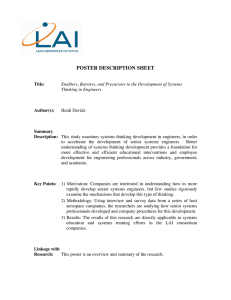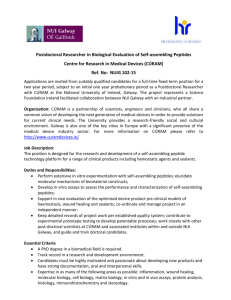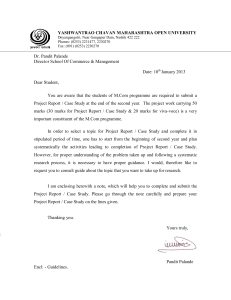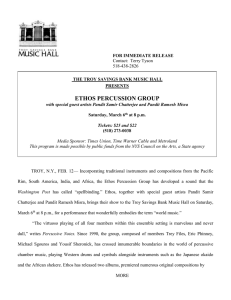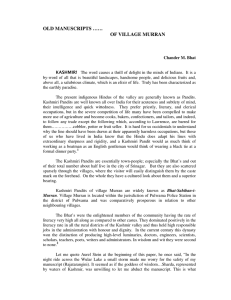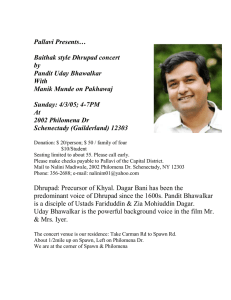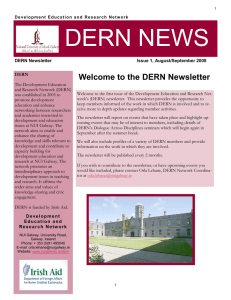Professor Abhay Pandit Department: Mechanical and Biomedical Engineering Contact:
advertisement
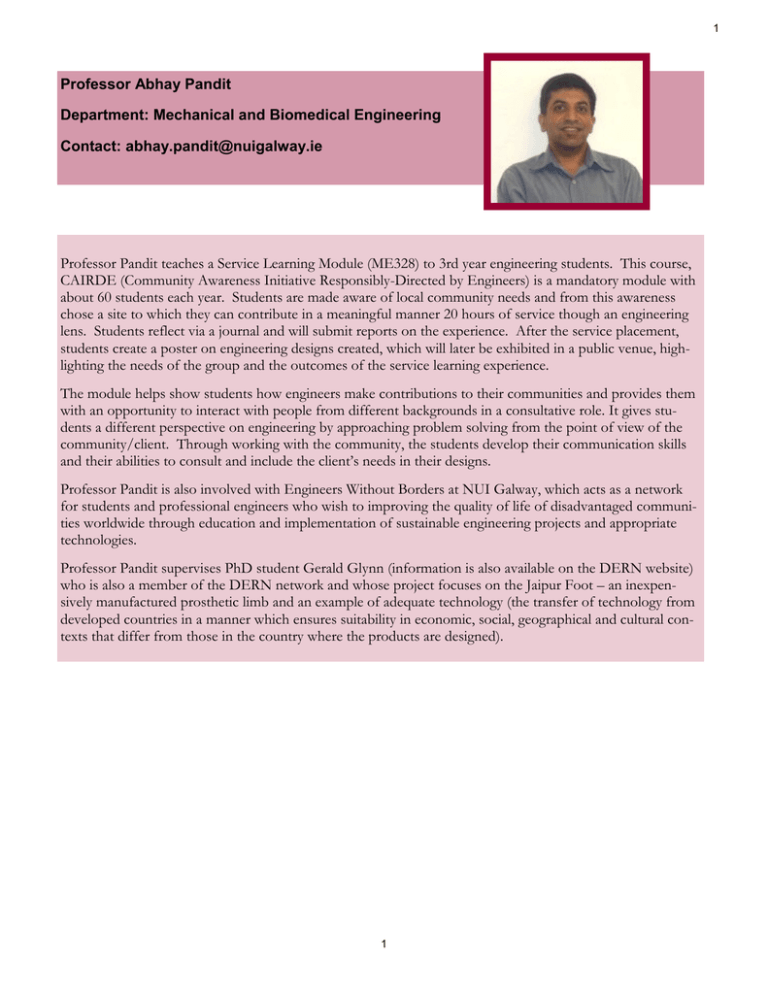
1 Professor Abhay Pandit Department: Mechanical and Biomedical Engineering Contact: abhay.pandit@nuigalway.ie Professor Pandit teaches a Service Learning Module (ME328) to 3rd year engineering students. This course, CAIRDE (Community Awareness Initiative Responsibly-Directed by Engineers) is a mandatory module with about 60 students each year. Students are made aware of local community needs and from this awareness chose a site to which they can contribute in a meaningful manner 20 hours of service though an engineering lens. Students reflect via a journal and will submit reports on the experience. After the service placement, students create a poster on engineering designs created, which will later be exhibited in a public venue, highlighting the needs of the group and the outcomes of the service learning experience. The module helps show students how engineers make contributions to their communities and provides them with an opportunity to interact with people from different backgrounds in a consultative role. It gives students a different perspective on engineering by approaching problem solving from the point of view of the community/client. Through working with the community, the students develop their communication skills and their abilities to consult and include the client’s needs in their designs. Professor Pandit is also involved with Engineers Without Borders at NUI Galway, which acts as a network for students and professional engineers who wish to improving the quality of life of disadvantaged communities worldwide through education and implementation of sustainable engineering projects and appropriate technologies. Professor Pandit supervises PhD student Gerald Glynn (information is also available on the DERN website) who is also a member of the DERN network and whose project focuses on the Jaipur Foot – an inexpensively manufactured prosthetic limb and an example of adequate technology (the transfer of technology from developed countries in a manner which ensures suitability in economic, social, geographical and cultural contexts that differ from those in the country where the products are designed). 1
![Question 1 [ ] 1- What is the main goal for software engineering](http://s2.studylib.net/store/data/010210498_1-4a6ecbb9be365dadeadd769b25d4af75-300x300.png)

